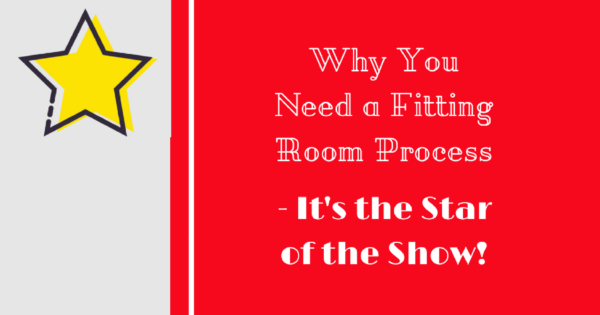We’re on a mission to help you understand how to make fitting rooms better. This is the second of a three-part series intended to provide the basics of a great fitting room experience. This post focuses on the need for a defined fitting room process.
For customers, shopping for apparel should be a lot like eating a fine meal. The friendly greeting at the entrance is like a cocktail before dinner. A good layout to the sales floor is like an appetizer. To the surprise of many, the main course is actually the fitting room. It’s the star of the meal…er, shopping experience. A pleasant experience at the cashwrap is the dessert, or sherry after dinner if that’s what floats your boat.
Sure, the whole experience is important, but it’s the main course, or, in this case, the fitting room, that’s going to leave a lasting impression. Ultimately, in the retail transaction process, the fitting room is the moment where a go/no-go decision on a purchase is made.
With that in mind, it becomes clear that sales associate training and any adjustments to the store layout should be designed to direct customers to the fitting room.
Make Sure it’s Presentable
We talked about it at length in the first post of this series, How to Make a Fitting Room Presentable, but it does warrant some review. There are dozens of ways to improve the appearance of the fitting room, but if you get the “Big 5” right, you’re off to a good start. To recap, they are:
- Enough space for a larger person to move around
- A bench or chair for customers to sit on
- Hooks or hanging rods for coats, purses, and the customer’s clothes
- Good lighting
- At least one mirror in each fitting room
Once you have the basics covered, it’s time to make sure all aspects of the store lead to the fitting room.
Clearly Define a Fitting Room Process
From a customer’s perspective, there is nothing worse than having to get dressed in their own clothes to fetch a different size, color or style of something they are trying on. In fact, if a customer has to re-dress, they’re likely to keep walking right out the door.
Remember, the fitting room is the “main course” of the customer’s experience in your store. There is no better time for your sales associates to interact with customers than when they’re in or on the way to the fitting room. Conversations relating to the fitting room lead to a natural point to exchange first names. It also opens the door to ask the customer about the purpose of their shopping trip. This is helpful for a couple of reasons:
- Loss Prevention. Of course, your fitting room process shouldn’t be built around theft-deterrence, but it is a nice bonus. Thieves who have exchanged names with a sales associate are dramatically less likely to steal.
- Cross-Sell and Upsell Opportunities. Once you know a customer is buying durable clothes for a camping trip, suggesting the slightly more expensive shirts that are wrinkle-free (upsell) is helpful. When you learn a woman is shopping for something to wear to a wedding, suggesting the right strapless undergarment to go with the dress (cross-sell) is natural.
These friendly interactions, so critical to the sales process, can only happen when there’s a defined pattern directing customers to the fitting rooms in the first place. The best way to make sure customers receive the level of service they need in the fitting room is to ensure they always have access to a sales associate. The easiest way to ensure that access is to take advantage of technological solutions, like fitting room call buttons, so that help is there at the literal push of a button.
[xyz-ihs snippet=”MOFU-Fit-Happens-button”]
The Technology Exists, USE IT!
If money were no object, every customer would have a personal valet in the store to fetch and carry items and make the perfect upsell suggestion to complete a customer’s ideal weekend outfit. We’re a long way from that, but with RFID tagging and smartphone alerts based on where a customer is in a store, we’re getting closer every day.
But the single most important piece of technology you can use in the fitting room is the same one that’s been letting us know that someone is at the door at home for decades. A simple call button in each fitting room lets customers get the help they need when they need it, while enabling associates to tend to other customers.
[Tweet “Why You Need a #FittingRoom Process – It’s the Star of the Show! @alerttechinc”]
Stay the Course
Even the basics of getting fitting rooms right is a lot to take in, but we promise the effort is worth it. First, make the fitting rooms lovely and inviting, and then channel energy into getting customers to take the time to try things on. How? We’ll address that in the next part of this series, “How to Create Stellar Customer Experiences in the Fitting Room.”
We’ve only scratched the surface with the information provided in this three-part series, but you can learn more about what turns an average fitting room into a great one in the book, “Fit Happens.” Download your free chapter today.
[xyz-ihs snippet=”Fit-Happens-CTA”]

